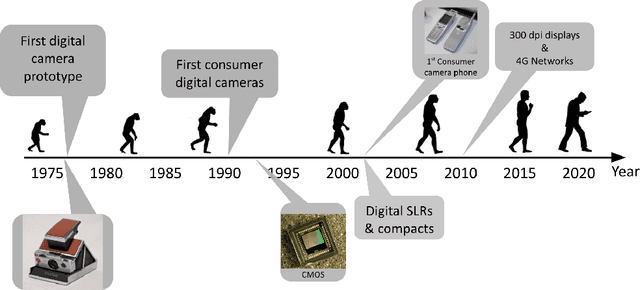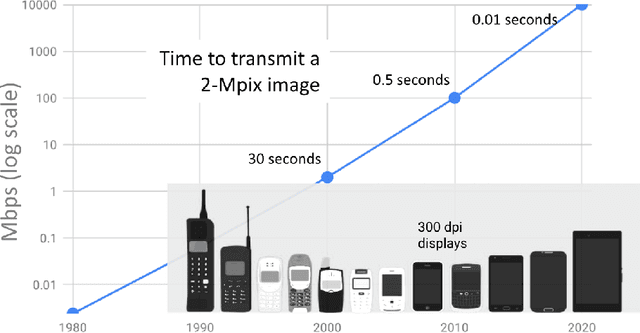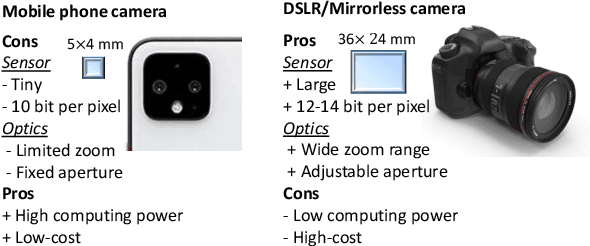Mobile Computational Photography: A Tour
Paper and Code
Mar 10, 2021



The first mobile camera phone was sold only 20 years ago, when taking pictures with one's phone was an oddity, and sharing pictures online was unheard of. Today, the smartphone is more camera than phone. How did this happen? This transformation was enabled by advances in computational photography -the science and engineering of making great images from small form factor, mobile cameras. Modern algorithmic and computing advances, including machine learning, have changed the rules of photography, bringing to it new modes of capture, post-processing, storage, and sharing. In this paper, we give a brief history of mobile computational photography and describe some of the key technological components, including burst photography, noise reduction, and super-resolution. At each step, we may draw naive parallels to the human visual system.
 Add to Chrome
Add to Chrome Add to Firefox
Add to Firefox Add to Edge
Add to Edge